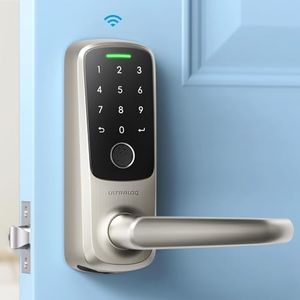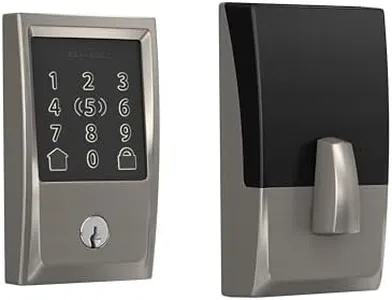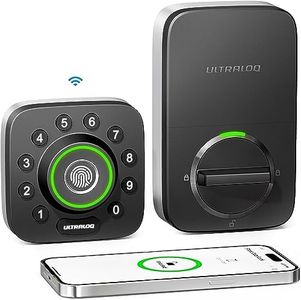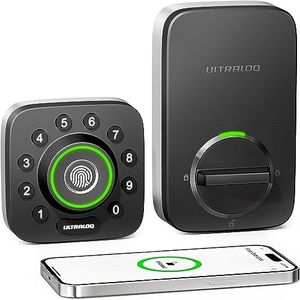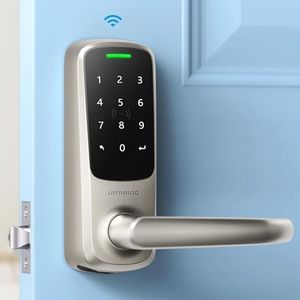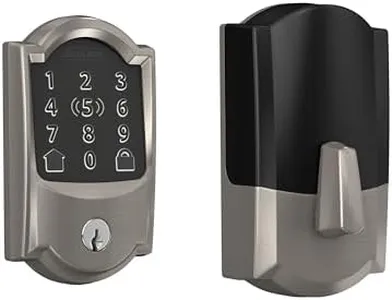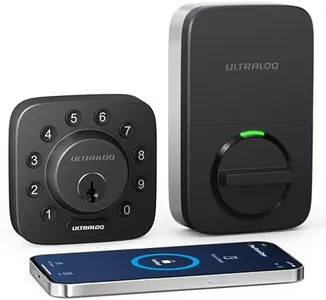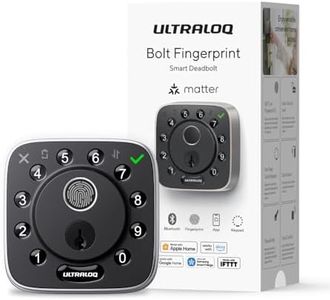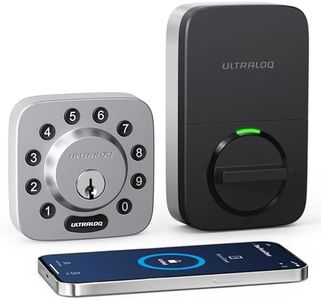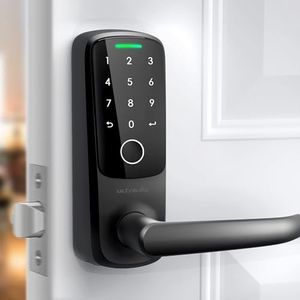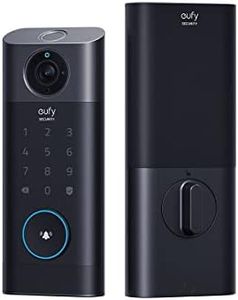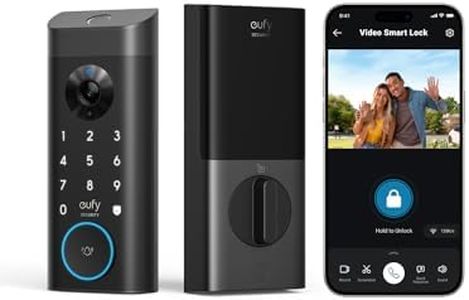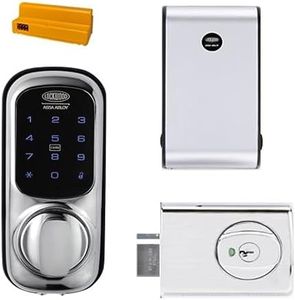We Use CookiesWe use cookies to enhance the security, performance,
functionality and for analytical and promotional activities. By continuing to browse this site you
are agreeing to our privacy policy
10 Best Smart Door Locks
From leading brands and best sellers available on the web.By clicking on a link to a third party's website, log data is shared with that third party.
Buying Guide for the Best Smart Door Locks
Choosing the right smart door lock is a great way to boost both your home security and convenience. The market offers a variety of options, each with unique features and technologies. When selecting a smart door lock, it's important to think about what matters most to you—such as easy operation, security level, or compatibility with your existing door and smart home ecosystem. Identifying your main needs will help you avoid unnecessary features, ensuring a well-suited and enjoyable upgrade to your entryway.Lock TypeThe lock type refers to the mechanism by which the smart lock operates and fits onto your door. The most common types are deadbolt replacements, deadbolt adapters, and lever-style locks. Deadbolt replacements completely change the existing lock, offering the highest compatibility with smart functions. Adapters use your existing deadbolt but add smart technology, making installation easier. Lever locks combine handle and lock in one for doors that don't have deadbolts. Think about your current door setup and whether you want a full replacement or just an upgrade—choosing the type that fits your space is essential for both security and ease of installation.
Unlocking MethodsUnlocking methods determine how you and others will access your door. Common options include keypads, fingerprint scanners, smartphone apps, NFC (cards or fobs), voice assistants, and traditional metal keys. Some locks offer several methods, while others are limited. If you want key convenience for multiple users or family, keypad and app control are useful. For maximum hands-free entry, consider biometric or voice unlock. The right choice depends on who uses the lock and your comfort with technology—pick what matches your daily habits and preferences.
ConnectivityConnectivity describes how the lock communicates with your devices or network. Typical choices include Bluetooth, Wi-Fi, Zigbee, and Z-Wave. Bluetooth is simple and suitable for direct phone control, but has limited range. Wi-Fi allows remote access and alerts, but may need more frequent battery changes. Zigbee and Z-Wave are used in advanced smart home setups and require a compatible hub. Choose Bluetooth or Wi-Fi for easy, direct control, and consider Zigbee/Z-Wave only if you have or plan to build a complex smart home.
Power Source and Battery LifeMost smart locks are battery powered, though a few may offer direct wiring. Battery life varies based on usage, connectivity method, and features. Longer life (six to twelve months or more per set) means less maintenance but sometimes fewer features. Shorter life is common for locks with Wi-Fi or always-on capabilities. Look for locks that provide low-battery alerts or backup entry options. If you want to avoid frequent changes, choose energy-efficient models, but always consider how backup access (like a key) is available if the battery runs out.
Integration with Smart Home EcosystemIntegration refers to how well the lock works with other smart home systems such as Amazon Alexa, Google Home, or Apple HomeKit. This determines if you can control the lock with your voice, routines, or automation scenarios involving lights, cameras, or alarms. Some locks work only with their own apps, while others support multiple platforms. Consider your current or future smart home plans—if you want seamless control, prioritize locks that support your preferred ecosystem.
Security FeaturesSecurity features include things like automatic locking, tamper alarms, encryption, and the ability to create and manage unique user codes. Some locks offer advanced protections like two-factor authentication or intrusion detection. More security features generally mean greater peace of mind, but can also make usage slightly more complex. If you prioritize safety or have many users, look for locks with strong encryption, alert systems, and flexible code management. Choose the right balance based on your security needs and the number of people accessing your door.
Installation RequirementsInstallation requirements determine how easily you can fit the smart lock to your door. Some models are homeowner-friendly with simple tools, while others might need a professional or significant door modification. Consider whether you are replacing an existing deadbolt or starting from scratch, the thickness and material of your door, and whether you rent (where reversibility may matter). Pick a model whose installation matches your comfort with DIY projects, or plan for professional help if the fit is complex.
